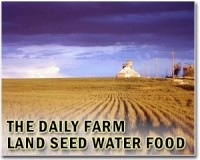 |
Chicago IL (SPX) Jan 17, 2011 University of Illinois research reports that several herbicides used on corn also have good selectivity to Miscanthus x giganteus (Giant Miscanthus), a potential bioenergy feedstock. "No herbicides are currently labeled for use in Giant Miscanthus grown for biomass," said Eric Anderson, an instructor of bioenergy for the Center of Advanced BioEnergy Research at the University of Illinois. "Our research shows that several herbicides used on corn are also safe on this rhizomatous grass." M. x giganteus is sterile and predominantly grown by vegetative propagation, or planting rhizomes instead of seed. This can be a very costly investment and requires a 1- to 2-year establishment period. Anderson's research showed that Giant Miscanthus does not compete well with weeds during establishment, especially early emerging weeds. "There's a great cost in establishing Giant Miscanthus," Anderson said. "It's important to protect this investment, especially if it goes commercial. When weeds outcompete Giant Miscanthus, the result is stunted growth and lack of tillering. Basically, you are risking the crop's ability to overwinter." The study, funded by the Ingersoll Fellowship, the Illinois Council on Food and Agricultural Research and the Energy Biosciences Institute, screened 16 post-herbicides and 6 pre-herbicides in a greenhouse setting. Several herbicides, particularly those with significant activity on grass species, caused plant injury ranging from 6 to 71 percent and/or reduced M. x giganteus dry mass by 33 to 78 percent. Researchers then narrowed these herbicides down to the safest options and evaluated them in field trials replicated over two years. Field experiments confirmed the greenhouse experiments. Pre-emergence herbicides and herbicides with broadleaf-specific activity generally did not produce significant injury or reduce aboveground biomass while herbicides with considerable grass activity tended to cause injury ranging from 22 to 25 percent and reduce biomass by 69 to 78 percent. "We discovered the anecdotes were true for the most part," he said. "Herbicides that are safe to use on corn demonstrate good selectivity to Giant Miscanthus." Anderson said it's more difficult to kill a grass weed in a grass crop such as Giant Miscanthus. Identifying herbicides that don't hurt its yield or growth and maturity also posed challenges for researchers. "I think the key is finding pre-emergence herbicides that you can get in early to take care of weed problems in Giant Miscanthus," he said. Atrazine is one of the herbicides that proved safe on M. x giganteus. "The good news is that atrazine is completely safe pre- or post-emergence," he said. "Atrazine is cheap and relatively effective. One of the major reasons we are continuing to screen more herbicides is to find additional effective options if atrazine utilization were limited in areas where Giant Miscanthus might be grown." While there remains no approved label use for herbicides on M. x giganteus for biofuel production, Anderson hopes this research can serve as a foundation for either growers to begin an IR-4 specialty product process or for a major chemical company to add it to their label in the future. Giant Miscanthus production is picking up in states such as Kentucky and Georgia, he said. He believes adding this feedstock to herbicide labels is not far off, but may be dependent on USDA's support of cellulosic ethanol. This research, "Miscanthus x giganteus Response to Preemergence and Postemergence Herbicides," was published in Weed Technology. Researchers included Anderson, Thomas Voigt, German Bollero and Aaron Hager.
Share This Article With Planet Earth
Related Links University of Illinois College of Agricultural, Consumer and Environmental Sciences Farming Today - Suppliers and Technology
 World agriculture threatened by water gluttony: report
World agriculture threatened by water gluttony: reportNew York (AFP) Jan 12, 2011 World agriculture employs more than one billion people but is in trouble because it's the biggest consumer of ever scarcer water and a huge producer of greenhouse gas emissions, a new report said Wednesday. Worldwatch Institute, a research group on climate, energy, agriculture and the green economy, said there had to be a revolution in investment in food and water to reverse a "frightening" ... read more |
|
| The content herein, unless otherwise known to be public domain, are Copyright 1995-2010 - SpaceDaily. AFP and UPI Wire Stories are copyright Agence France-Presse and United Press International. ESA Portal Reports are copyright European Space Agency. All NASA sourced material is public domain. Additional copyrights may apply in whole or part to other bona fide parties. Advertising does not imply endorsement,agreement or approval of any opinions, statements or information provided by SpaceDaily on any Web page published or hosted by SpaceDaily. Privacy Statement |